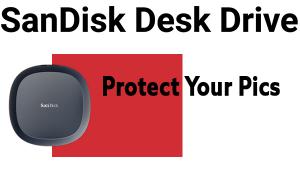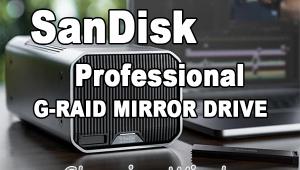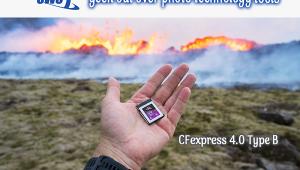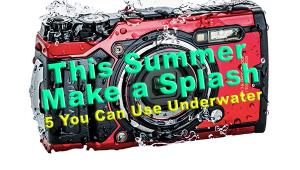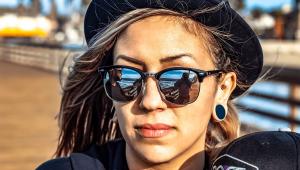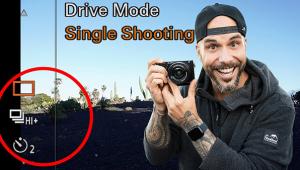Start Shooting 35mm Film - Here’s a Complete Guide
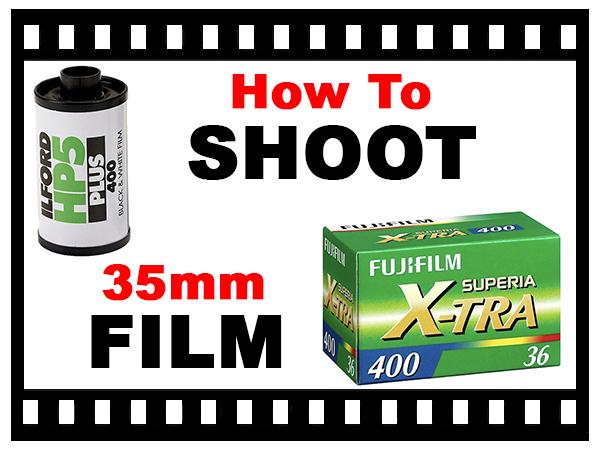
It’s easier to get started in film photography than you may think, and you’re sure to enjoy the ride. If you’re even vaguely thinking about shooting some film, read this story. It’s a compendium of everything you need and where to get it.
Many seasoned photographers started out with 35mm, 120 roll film or 4x5 view cameras back in the pre-digital days. For most of us, 35mm was the ticket because it offered the most economical path, and there were more 35mm camera models to choose from.

Eventually we all transitioned to digital photography—some eagerly, some defiantly and some reluctantly—and ultimately learned to love megapixels as much as we loved fine grain. In very many ways digital photography is superior. Immediate feedback, minimal cost-per-shot, ability to share, replicate and archive without loss of image quality, and the ability to edit and alter an image using a basic PC (or even a cellphone) all head the list of betterments.
But digital photography, despite its superiority, does not deliver the same experience as shooting film. And many argue that images captured on film have certain characteristics that digital cannot match. That’s a discussion for another time. Shoot some film and form your own opinion.
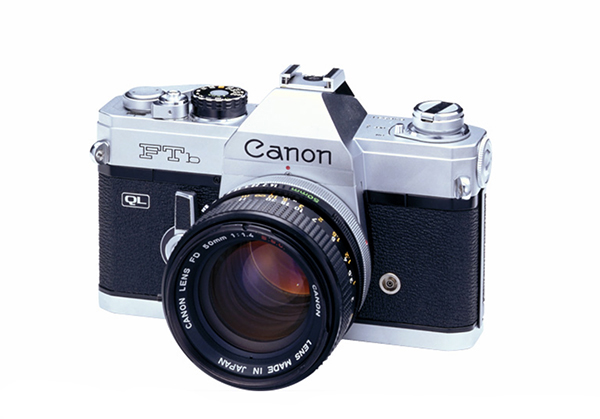 Start with a 35mm Camera
Start with a 35mm Camera
35mm Film Camera Revival?
We applaud Ricoh’s recent announcement that they’re studying the feasibility of bringing 35mm film cameras to market again under the Pentax badge. The venerable Pentax K1000 was the gateway to photography for tens of thousands of students, enthusiastic amateurs and budding professionals. Ricoh supports the DSLR category too, whilst many of their competitors have abandoned DSLRs in favor of mirrorless models. Hats off to Ricoh on both counts.

Lowest Price Options
On the cheap, Amazon offers a two-pack of Fujifilm single-use cameras for around $40. They also offer Kodak branded cameras at similar pricing. Although the price is attractive, we can’t recommend these in good conscience. They do not offer any control over exposure, focus or anything else, really.
Sources for High Quality 35mm Cameras
Our go-to source for used digital cameras is MPB, but at the moment the only 35mm cameras they have are pricy Leicas. And while Leicas are great in every way, they cost more than a casual photographer may be willing to pay for a fling with 35mm film.
UsedPhotoPro has about 17 zillion used 35mm cameras for sale, and many 120 roll film and large format cameras too. If you don’t know these guys, they’re a division of Robert’s and are located in wholesome Indianapolis, Indiana. We’ve been dealing with them for years and have always been satisfied with our purchases.
UsedPhotoPro currently has a large number of great candidates for in your entry into the world of film photography. Among other brands they have a good quantity of Minolta SR-T 101 bodies in varying conditions and priced below the $50 mark. This is just one example. They have more and their inventory is constantly refreshed.
 Online Auctions? Thank you, no.
Online Auctions? Thank you, no.
Many buyers search eBay out of habit, but where 20+ year-old cameras are concerned, there are severe caveats that apply. It’s safer to deal with an established camera company that offers warranties and returns than to try your luck buying from a random stranger. B&H, Adorama, Bergen County Camera, KEH and dozens of other reputable camera shops offer fair pricing, accurate descriptions of condition, prompt delivery and outstanding after-sale services, including a warranty.
Popular 35mm Brands Available Secondhand
During the Golden Age of 35mm SLR photography, five brands dominated market share. In alphabetical order they were Canon, Minolta, Nikon, Olympus and Pentax. Other great brands that enjoyed lower SLR sales levels include Fujifilm, Topcon, Rollei, Yashica, Kodak, Mamiya and Leica.
In the medium format category, Rolleiflex, Hasselblad, Pentax, Mamiya, Yashica and Bronica were among the best-selling brands. They used 120 film (or both 120 and longer rolls of 220) and produced images 4.5 x 4.5 cm, 4.5 x 6 cm, 6 x 6 cm and 6 x 9 cm depending on the model. Hasselblad also produced models that used 70mm roll film.
35mm rangefinder-focusing point-and-shoot cameras are another option. Compared to contemporaneous SLR cameras, they contained more plastic and few had zoom lenses. Whatever you do, don’t be tempted by a camera that uses APS film. If you’ve never heard of the Advanced Photo System, lucky you.
A 35mm SLR is your best bet in terms of variety, reliably and the versatility of interchangeable lenses. Bonus: most likely you can deploy that used SLR lens on your modern mirrorless camera via an inexpensive adapter. While many camera makers delivered a dud here or there, by and large the vast majority of 35mm SLR and medium format cameras manufactured in the 1970s and 1980s were solidly reliable. Pick any older Canon, Minolta, Nikon, Olympus or Pentax and you can’t go wrong.
Cautions and Hazards
What’s the lens mount? Every SLR manufacturer changed their primary lens mount at least once. Confirm that you can still find lenses that fit your used camera. Of course, if you buy it with lens and have no expansion plans, this is a nonissue.
If the camera you’re considering has a built-in light meter, what battery does it require? Is that battery (or suitable replacement) available? Some older models used button cells that contained mercury or other contaminants and are no longer sold. Don’t bail immediately; after a short Google search you may be able to find a suitable replacement.
The light meter in the camera may or may not be accurate. You can shoot a roll of film to find out, but that’s costly and wasteful. Better solution is to buy a handheld light meter to crosscheck. Meters old and new are generally available from the same sources as used 35mm cameras. I bought a used Gossen LunaPro from UsedPhotoPro for around $25 a few years back and use it frequently even though the light metering in my cameras is reliable and accurate.
Over time and for various reasons the shutter mechanisms in some older cameras lose their accuracy. It’s not uncommon for a camera to function perfectly in every way except that one or more of the shutter speed settings is faulty. It’s usually the faster speeds: 1/1000 may actually be 1/500 or even slower. Unfortunately you don’t discover this until some of your images are incorrectly exposed. Tip: record the exposure settings for the first few rolls, that way you can more easily spot the deviations.
Those black spongy foam rubber things glued to inside edges of the camera back and elsewhere inside the film chamber are called light seals. They tend to deteriorate over time, especially the ones made of rubber (felt seals tend to last longer). They’re there to prevent light leaks, and when they fail, your film—all of it—could be ruined, or at least streaked and blotched. When buying a used 35mm camera sight unseen, always ask about the condition of the light seals.
There’s a foam rubber bumper that dampens the shock of the mirror when it flips up out of the light path during exposure. These often deteriorate as well. Ask about the integrity of the mirror bumper when buying without inspection.
Although big-name cameras were notoriously durable and well made, repairs are sometimes necessary. If you buy a camera that’s more than 20 years old, it’s wholly unlikely that spare parts exist. And few, if any, technicians have firsthand repair knowhow. In most cases you’re out of luck if the secondhand camera breaks.
 Buy Some Film
Buy Some Film
Color Print or Color Slide?
What’s the goal of your endgame? Black-and-white film is less expensive and can be developed at home (more on that later). Color slides are rich and lustrous but both film and processing cost more. A good compromise is color print film. Color print film can be printed as a monochrome image, too. But B&W film is probably the best place to start.
Cost is one reason why we recommend beginning your adventure in 35mm film shooting with black-and-white stock. A typical roll of black-and-white film, for instance Ilford FP4 Plus Negative Film (35mm Roll Film, 36 Exposures) sets you back about $9 at B&H Photo. One 36 exposure roll of Fujicolor Superia X-TRA 400 Color Negative Film runs $15 at B&H, compared to B&H’s price of $26 for comparable slide film: Fujichrome Provia 100F Professional RDP-III. Note that what we call Slide Film is generally labeled Color Transparency or Color Reversal by the manufacturer.

There are less costly B&W films available, too. Look for Holga, Kentmere Pan, Arista EDU Ultra and others.
Processing
Processing and Scanning to Digital Files
Your local camera shop (if you’re lucky enough to have one in your vicinity) can send your film for processing, scanning and printing. Note that these are three separate activities, i.e., you may wish to have your film developed into negatives and then scan them yourself at home. So be sure to specify exactly what you want done to the film.
Besides your local photo dealer, many CVS and Walgreens pharmacies offer film processing services. Apparently, not every CVS or Walgreens location participates, so call ahead to confirm availability and pricing.

For high quality mail order film handling, MPIX, a professional photo lab located in Pittsburg, KS and Columbia, MO, has been my personal favorite for many years.
MPIX processes 35mm and medium format color film and disposable cameras and gives you the option of ordering standard scans (4.5 megabyte files) or large scans (18 MB). After scanning, your digitized images are made available for downloading; then MPIX sends you your negatives by mail for a small shipping fee. Cost for develop-and-scan is $11.95 per roll of 35mm or medium format film, and $13.95 for single use cameras. Prints are available but not included in the processing cost, and you’re under no obligation to order any.
Home Development
Processing film at home is not only possible, it’s relatively easy and can be a great family fun project. It’s rewarding on many levels, including long-term cost savings, fast results (compared to farming the process out) and a solid feeling of accomplishment.
On the downside, initial cost of developing equipment (tanks, thermometer, chemicals, etc.) is relatively high and you still must scan the negatives before you can edit them digitally. Of course, you can print them at home too, but building a darkroom is clearly a look-before-you-leap proposition.
Home film processing is an entire article by itself, so we don’t list the options and sources here. If you’d like to read about it in detail, leave a comment here or on our Facebook page.
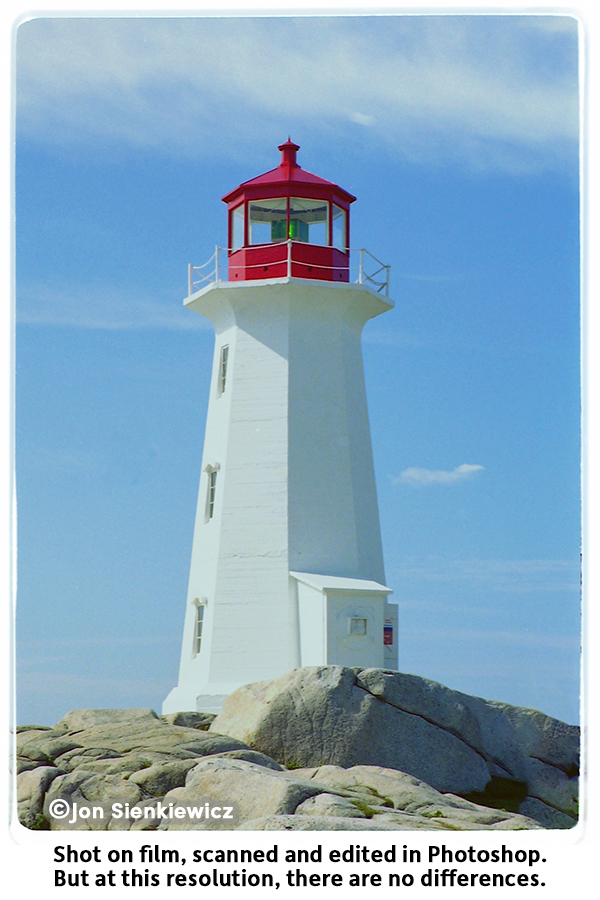
Is There a Difference Between Film and Digital Images?
Yes. The differences are more apparent when you compare large prints made directly (i.e., not digitized first) from color negatives or slides to prints made from digital image files.
Some will argue that this is untrue, that the differences are imaginary. And others will swear that they can see significant differences between original digital images and those that were shot on film and then scanned.
For me, shooting film is not about comparing one image to another. It’s about the experience of using a 35mm SLR camera for its own sake—loading the film, being limited to 36 images per roll, not being able to see the results immediately, and especially enjoying the superb craftsmanship of older 35mm SLR camera bodies and legacy lenses.
Become a Member of the Shutterbug Community
Register for a free account. Sign up for our newsletter. Spend five minutes (or less) uploading your best shots once every week or so. Potentially become a Photo of the Day winner. Enjoy viewing the fantastic work being done by thousands of photographers all over the world—and add your images to the enduring collection.
—Jon Sienkiewicz
(As an Amazon Associate, Shutterbug earns from qualifying purchases linked in this story.)
- Log in or register to post comments





